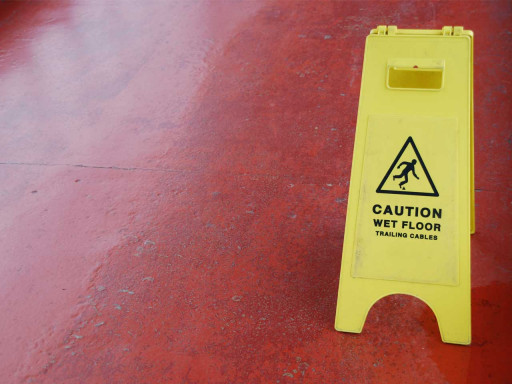Sugar spills at the Imperial Sugar plant near Savannah, Georgia in the US contributed to a chain of explosions in 2008 killing 14 workers and causing millions of dollars, worth of damage. Something as innocuous as milk, in enough volume, will kill fish in a watercourse or promote algal growth in drains. One litre of diesel can pollute one million litres of water.
All spills however small should be cleaned up as soon as possible in the safest manner without putting the responders in danger.
The first steps that are taken are the most critical for a safe outcome and should be proportionate to the incident’s nature and scale.
The main hazards fall into four broad categories – slips and falls, health exposure, explosion and fire and environmental pollution.
As soon as you hear of an incident all personnel who do not need to be at the scene must be cleared from the affected area immediately and an alarm raised if the spill is known to be hazardous.
If the substance is hazardous you should simultaneously find out whether anyone has come into contact with it and arrange first aid if necessary and follow up medical attention. In the case of a hazardous powder, such as cement or strong detergent a first aider can wash off the contamination.
If the substance is unknown it is prudent to treat it as a hazardous substance until proven otherwise.
The next step should be to prevent further spills if there is any safe means of doing so and carry out a detailed investigation of the whole incident.
What can go wrong?
Safety hazards
If the spilled material is flammable, as in the case of paint, solvents, diesel fuel, heating oil, petroleum-based oils or gels and machine oil, it can generate flammable vapours depending on the location, ambient conditions and the presence of ignition sources. The spill of a flammable product in a confined workshop or store room, left unattended and then presented with an ignition source can result in a serious fire or explosion.
Some of the most common sources of ignition in a workplace are naked flames including welding and cutting equipment, smoking, electrical lighting, heating and many, many more depending on the type of work carried out.
Health hazards
These could manifest in the form of harm to skin, eyes and the respiratory system, in extreme cases there is a risk of internal organ damage. Many chemicals can penetrate even unbroken skin, causing ill effects in other parts of the body.
Environmental hazards
Spills may have serious consequences on the natural environment near the workplace. Liquids can soak through the ground to reach ground water, or can run into ditches and watercourses. Spilled materials can travel far in running water before they are detected and dealt with, causing severe damage to wildlife. It is important to know where your sites drains lead to. There are two main types – surface water to take away the rainfall and foul sewers that take the domestic waste to treatment works. However, in remote places of work and in farms, there may be only soakaways or ditches that may lead to the nearest public waters or ground water.
Depending on your business ensure that you have an emergency plan in place should a hazardous or large spill occur. For further help and advice why not contact What No Safety Services?

